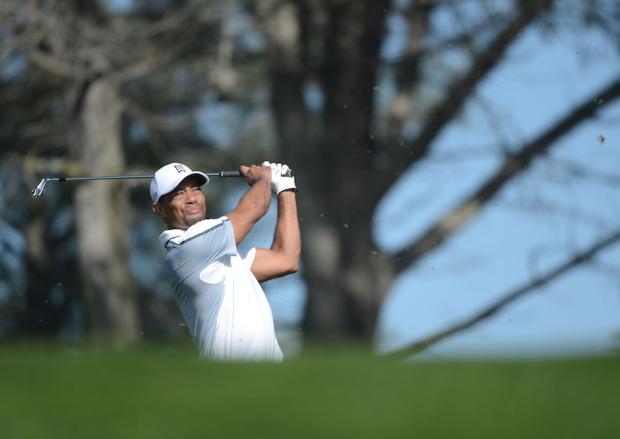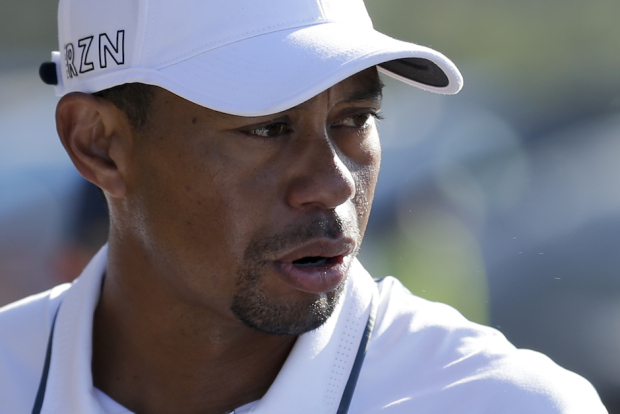Tiger Woods is not taking a break from the PGA Tour to fix a hitch in his golf swing. He’s taking a break to fix the hitch in his head. The issue is not so much how to hit the golf ball, but whether he wants to hit it at all. When a guy who famously hates public life gives formal media interviews about his “deactivated glutes,” you get the feeling he’s looking for an out. Translation: “I think I’d like to go home and sit for awhile.”
What’s really wrong with Woods is that he hasn’t been practising. No skilled professional’s short game goes this far wrong if he’s been working at it. When you start skulling the ball across the green, that’s less a mechanical issue than a result of spending more time in places like Cortina d’Ampezzo than on the golf course. There is nothing wrong with that, either. Woods is 39, and he’s earned some time in the Alps.
Apparently one of the things Woods is attempting to figure out is whether, for the first time in his life, he can play world-class tournament golf without being a raging narcissist. There was an oddly conflicted and revealing clause in his statement announcing a leave of absence from the PGA Tour on Wednesday. “Right now, I need a lot of work on my game, and to still spend time with the people that are important to me,” he said.
Woods used to practice so obsessively that he would play 54 holes in a single day. At his peak in 2005 he played 26 tournaments worldwide. But in the decade since, he has played in 20 tournaments just three times. Some of those absences were results of injuries to his knee and back, of course. But it’s also a fact that he’s in a love affair with globe-traveling skier Lindsey Vonn, and is a father to two soccer-playing children.
“I would say I practice much less now,” Woods acknowledged a couple of weeks ago. “One, I’ve been hurt, and two, I want to spend as much time as I can with my kids.”
Woods appeared in just 11 tournaments worldwide in the past year. Of those, he withdrew from three, and missed the cut in three. He has finished 72 holes in a tournament just four times.
Part of his struggle is undoubtedly about adapting to swing changes, but he also appears to be struggling with a sheer lack of enthusiasm. It’s never clear anymore when Woods’s grimaces on the golf course are from pain or frustration. He walks a course almost glumly, clad in greys and browns, as opposed to his old triumphalist weekend uniform of red shirt and black trousers. His recovery shots, the stingers and lashed woods out of the rough, are just bright glancing moments amid a grind.
When a player of his caliber shoots a career-worst 82 to miss the Phoenix Open cut by 12 strokes, and then cites a tight butt in withdrawing on one of his favourite courses, Torrey Pines, the issue is not wholly physical. The issue is loss of conviction. Woods’s vulnerability is an about-face from the days when people wondered whether his playing partners shot three shots worse just because they were intimidated. Behind any kind of athletic conviction is conditioning: the knowledge that you’ve done the work. For the first time in his career, Woods hasn’t done the work. And it’s not just because he has been unable to, but because he has been unwilling to.
Oh, he has fiddled with his swing. He has broken it down and built it back up again with Sean Foley and now Chris Como. He has revamped himself so completely that the Golf Channel’s Brandel Chamblee believes he has compromised his natural swing with over-analysis, and that’s certainly a factor. Woods has uttered a lot of confusing illogic in trying to explain why he has struggled to break 80. He says he’s “caught right between patterns, just old pattern, new pattern.” About those ghastly wedge shots: “Because of my old pattern, I was so steep on it, that I have a new grind on my wedge and sometimes it’s hard to trust. This is a similar grind I used to use back in the early 2000s, but it’s a different grind.”

But the truth is, if Woods decided to just get comfortable and hit it, his swing would be fixed.
Woods said in his statement Wednesday, “I am committed to getting back to the pinnacle of my game.” But the next sentence he left open ended. “I won’t be there unless my game is tournament-ready. That’s not fair to anyone.”
He is going back home to Jupiter, Florida, to practice and prepare for the rest of the season, he said. But isn’t that what he was supposedly doing these past few months? It’s difficult to see how chipping in his backyard and doing laps around his 3.5-acre private practice area, which includes four greens, a wedge range and his own hitting bay, is going to get him tournament ready. As Woods himself said a few days ago, “You’ve got to get out there and do it. Hitting golf balls is one thing and playing golf at home is another. Playing tournament golf is entirely another.”
Woods is not caught in between swing patterns so much as he’s caught in between his reluctance to spend hours on the golf course these days and his old competitive instincts and acute embarrassment at playing poorly. He wants to play well but is no longer sure he wants to do the obsessive work it takes.
Woods certainly has earned the right to be less committed to golf. He’s a buttoned-up man who has been competing on a bad knee for several years. Prodigydom is a lifelong struggle for physical health and mental balance. In addition to a broken-down body, Woods apparently is now dealing with a somewhat weary mind. The question is not whether he can fix his swing. It’s whether, if he can’t play at the level to which he’s accustomed, he wants to play at all.




